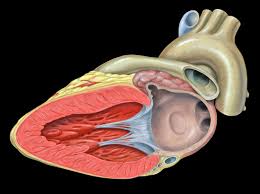When it comes to children’s health, early detection can address many medical concerns. Pediatric imaging is an indispensable tool, particularly for investigating lung conditions. This non-invasive approach allows healthcare professionals to better understand and diagnose respiratory concerns in young patients. By learning more about imaging techniques, parents can feel more confident in the steps taken to safeguard their child’s well-being.
What Is Pediatric Imaging?
Pediatric imaging is a specialized branch of medical imaging designed for children and teenagers. It accounts for differences in young patients’ size, structure, and needs. Professionals can use tailored techniques to capture detailed images of a child’s internal organs, including the lungs.
Professionals in pediatric imaging often undergo training specific to working with children. They are trained in ways to help make the experience less intimidating. This approach promotes accurate results while providing a child-friendly atmosphere. It is widely used in diagnosing, monitoring, and managing various health conditions.
Are There Different Types?
Several imaging methods are used for pediatric cases, each suitable for different diagnostic needs. X-rays are frequently the first type of imaging test performed. They are fast and require minimal patient preparation, which can be beneficial for younger children.
For a more detailed look, doctors often recommend CT scans or MRIs. CT scans can provide images of greater detail, especially for soft tissues like blood vessels and organs. They aid in the identification of more complex issues. Although it takes longer to complete, an MRI offers imaging without the use of radiation, which some parents may prefer. They can also detect details that other imaging techniques might miss.
Other options, like ultrasounds, can also play a role in specific scenarios. While not typically used for examining the lungs directly, they may assist in evaluating surrounding tissues or associated complications. Each method focuses on balancing accurate imaging with the comfort and safety of the child.
What Conditions Can It Detect?
Pediatric imaging can help doctors assess a wide range of conditions, including lung conditions. Here are some common conditions often identified through imaging:
- Gallstones
- Fractures and sprains
- Juvenile arthritis
- Heart conditions
- Crohn’s disease
- Multiple sclerosis (MS)
- Inherited conditions
- Tumors
- Appendicitis
- Encephalitis
- Hip dysplasia
- Sinus problems
- Infections
- Lung conditions
Respiratory infections, such as pneumonia, can be identified using imaging techniques. Imaging can also detect long-term conditions, including asthma or congenital lung abnormalities. Growths, fluid collections, or signs of specific diseases can all be checked with pediatric imaging. This includes rare conditions that may otherwise go unnoticed without advanced diagnostic tools. While not diagnostic on its own, imaging acts as a starting point for further evaluation.
Putting Your Child’s Health First
The role of pediatric imaging in early detection of lung conditions cannot be understated. It offers a way to explore concerns early, providing clarity to both parents and healthcare providers. If you have questions about whether imaging is right for your child, reach out to a trusted specialist. Early action and collaboration with professionals can bring greater peace of mind as you address your child’s respiratory health needs.


Leave a Reply